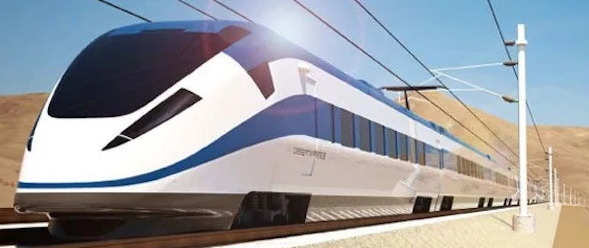At today's 3 p.m. Metro Planning and Programming Committee, boardmembers will consider programming monies slated for the now-canceled High Desert Corridor freeway to instead study building rail there.
The 63-mile High Desert Corridor freeway was planned to connect Palmdale, in north L.A. County, to Victorville, in San Bernardino County. The corridor is split between those two counties.
Long championed by former L.A. County Supervisor Mike Antonovich, the High Desert Freeway was supposed to be L.A. County's first new freeway in 25 years. The project had been envisioned as an 8-10 lane freeway, plus bike path, solar panels, and high-speed rail. That is, until Climate Resolve and others won a legal settlement against it, forcing Caltrans to shelve the project.
That legal victory left some project monies in limbo. Metro's Measure M sales tax expenditure plan includes "High Desert multi-purpose corridor" funding for the L.A. County portion: $170 million already available and slated for property acquisition, plus $1.8 billion for construction, scheduled for 2063-2067. Those moneys could now shift from freeway to high-speed rail.
The rail connection has become more timely, with more than a hundred miles of California High-Speed Rail under construction in the Central Valley and XpressWest high-speed rail from Victorville to Las Vegas also moving forward. The High Desert Corridor would close a gap in the state's high-speed rail network, allowing the system's Los Angeles to Bay Area north-south spine to branch out connecting east to Las Vegas. With potential federal stimulus funding coming in future years, now is the time to get future projects shovel-ready.
Today's Metro committee item (staff report) would program $3 million in Measure M funds for a $5 million study of High Desert Corridor rail. Also funding the study are a $1,375,000 California Transit Intercity Rail Capital Program (TIRCP) grant that Metro was awarded in 2018, and $250,000 (plus $375,000 in in-kind services) from DesertXpress Enterprises, LLC (Virgin Train USA.)
If approved, the $5 million would complete a High Desert Intercity Rail (HDIR) Corridor Service Development Plan. For the plan, Metro would partner with DesertXpress, California State Transportation Agency (CalSTA) and coordinate with the High Desert Corridor Joint Powers Authority, San Bernardino County Transportation Authority, and the cities of Victorville, Adelanto, Apple Valley, Palmdale and Lancaster.
The staff report does not explicitly call the High Desert study "high-speed rail" but states the rail would run "at speeds of up to 180 miles per hour;" anything over about 150mph is high-speed rail. The CAHSR project is designed to run at 220 mph. (Quibble: 180 mph is high-speed -probably more than what HDIR would be able to average - but why limit its speed to 180 mph, when XpressWest is planning 200 mph and CAHSR is building 220 mph?)
The study anticipates "linking Las Vegas to the Victor Valley area to Palmdale" but with riders transferring to/from the Metrolink Antelope Valley Line commuter rail to get to/from L.A. Union Station. The study does include an assessment of a "future one-seat ride scenario from Las Vegas to Los Angeles Union Station (LAUS) ...presuming ultimate completion of the California High Speed Rail project segments of Palmdale to Burbank and Burbank to LAUS."
Though there are still approvals, issues, and challenges for all the rail pieces to come together, the shift in the way L.A. is approaching the High Desert Corridor represents big change. For most of the past century, L.A. County has prioritized environmentally-destructive car-centric transportation over environmentally-friendly rail transportation. In the future, shifting several billion in High Desert Corridor dollars from freeway to rail will likely be seen as a big victory, and perhaps an important turning point. The victory was made possible by the efforts and persistence of southern California environmental non-profits that killed the High Desert freeway, opening the door to a different future for the region.






